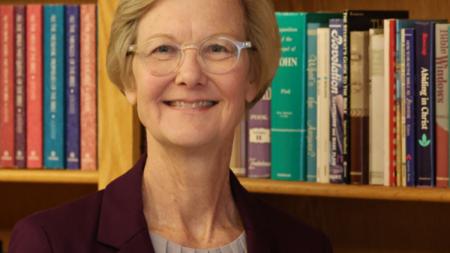Joint Advisory Committees Give Their Reports

Reporters from the joint advisory committees shared the results of their conversations during Monday morning’s joint session
Karen Huttenga
During their last time of joint worship, delegates from the RCA general synod and the CRCNA synod gave verbal and written reports about their joint advisory committee discussions that took place on Saturday.
These joint sessions were the first time that delegates from both denominations were asked to be in advisory committees together. Their conversations were recorded and reported, not for action by either synod, but to give direction for the future.
The RCA and the CRC come from common roots. They separated initially in 1857. For many years, there was little direct communication between the denominations, but in recent years, they have been more collaborative with each other. In 2014, they adopted what has become known as the “Pella Accord,” which is to “act together in all matters except those in which deep differences of conviction compel [them] to act separately.”
The proposals discussed by the Saturday groups presented new ways for the two denominations to cooperate. They varied from probable, already-in-the-works ideas, to a less likely, what-if, idea for the future.
Proposals already being worked on or likely to be worked on soon are ways of further consolidating denominational services, especially in the area of congregational renewal, and a joint effort to promote and shape interfaith engagement.
Less likely at present is a proposal to join and radically reconfigure the denominations.
The groups followed carefully scripted processes moving to single report from each group. The reports were consolidated over the weekend. On Monday morning, the two synods met together to hear summaries of the group discussions for each of the four proposals.
Five groups met to discuss the most radical proposal, “New Creation,” a proposal to join and reconfigure the denominations. In the proposal, the RCA and CRC would unite into one new denomination, and this new denomination would be divided into three synods, aligned by affinity, not geography.
Exactly how this would work was not specified, nor was how “affinity” would be defined. Congregations would choose which synod to belong to.
The groups discussing this proposal were dubious about the idea of affinity synods, concerned that separating churches by affinity would further divide them from each other. Instead, they found hope and joy in the increasing collaboration between the CRC and the RCA.
In contrast to the blue-sky thinking in the “New Creation” proposal, the groups discussing increased collaboration between the denominations were enthusiastic about the possibilities presented to them. One proposal envisioned future collaboration between the denominations in a “jointly developed and owned central service center” that would consolidate denominational services.
The remaining two proposals were specific examples of possible collaboration. One was an effort to bring together church renewal resources and programs so that congregations seeking assistance would be able to easily access what is now available and what may be available in the future. The other is a proposal to cooperate across denominations in learning how to engage other religions.
After a consolidated report on each proposal was read, the delegates spent a few minutes discussing what they had heard. What happens next to the proposals has not been specified.
For continuous coverage of Synod 2018 including the live webcast, news, video recordings, photos, reports, liveblog, social media links, and more visit www.crcna.org/synod.


